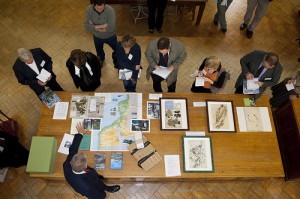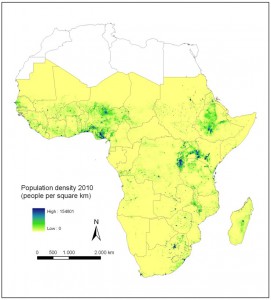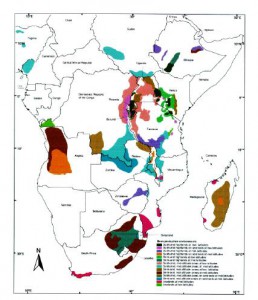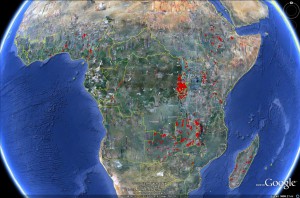Kew and IUCN made a splash today with the Sampled Red List Index for Plants. A representative sample of 7,000 species of plants was selected from the comprehensive IUCN Red List Index for detailed monitoring. 1 You can contribute to the Sampled Red List in a wiki-like environment, and follow its progress on the inevitable blog. An interactive map allows some basic exploration of the data. The headline number is that 25% of plant species are threatened. There are various crop wild relatives among the 7,000 species, 2 so it might be possible to calculate some statistics for that particular category, to complement other efforts.

Nibbles:Collecting missions, Grapes, Beans, Genome, Local markets, Water
- From GBDBH, a light glimmers: browse and search records of crop collecting missions.
- “Variations in early-season temperatures may alter substantially grapevine yield formation.” For Cab Sauv at any rate.
- Mixture of beans as good as resistant variety against anthracnose disease.
- Genome inversion spurs ecotypic differentiation.
- A review of medicinal plant markets.
- Today’s huge global dataset: “threats to human water security and freshwater biodiversity in global river systems.”
Spatial datasets continue to proliferate, and evolve
 A few more huge spatial datasets for you this morning, as I deal with jet-lag in a Maryland hotel room at 4 am.
A few more huge spatial datasets for you this morning, as I deal with jet-lag in a Maryland hotel room at 4 am.
Today there’s a high resolution dataset of the population of Africa. And an analysis of wetland protected areas. 3 And finally a global dataset of particulate matter pollution. This is presented from a human health perspective, but it could have applications in agriculture too. 
I still want to know who’s keeping track of this stuff. Maybe you don’t need to, you can just google as the need arises, but somehow I doubt it. Would love to hear from the CGIAR’s spatial data consortium folks, if they’re listening.
Meanwhile, one of the participants in that consortium has announced that they’re updating one of their iconic products, the now oldish “Atlas of the Common Bean (Phaseolus vulgaris) in Africa.” 
How long before they mash it up with that population dataset? And with the data on the location of genebank accessions, for example from Genesys.
Not that it hasn’t been done before, in a very crude way, as you can see in the map in Figure 2 below.
Nibbles: Carnival, Local food, Rice, Yacon, Coffee
- Science for the People blog carnival is up, answering questions.
- How fashion turns the local glamorous, exotic and desirable — foods edition.
- Sub-1 rice gene takes over local varieties, changes nothing except flood tolerance.
- Rhizowen may be suffering from inadvertent introgression, in his yacon.
- New variety — just the one — resistant to coffee berry rust and leaf rust released in Kenya.
Nibbles: Genebank, Guanaco, Maize, Wild food
- Maintaining a citrus gene bank. Just the book you need if you have to, er, maintain a citrus genebank.
- Guanacos need quiet.
- Don’t understand this piece on maize germplasm conservation and use.
- Indigenous food plants in trouble in the Philippines.